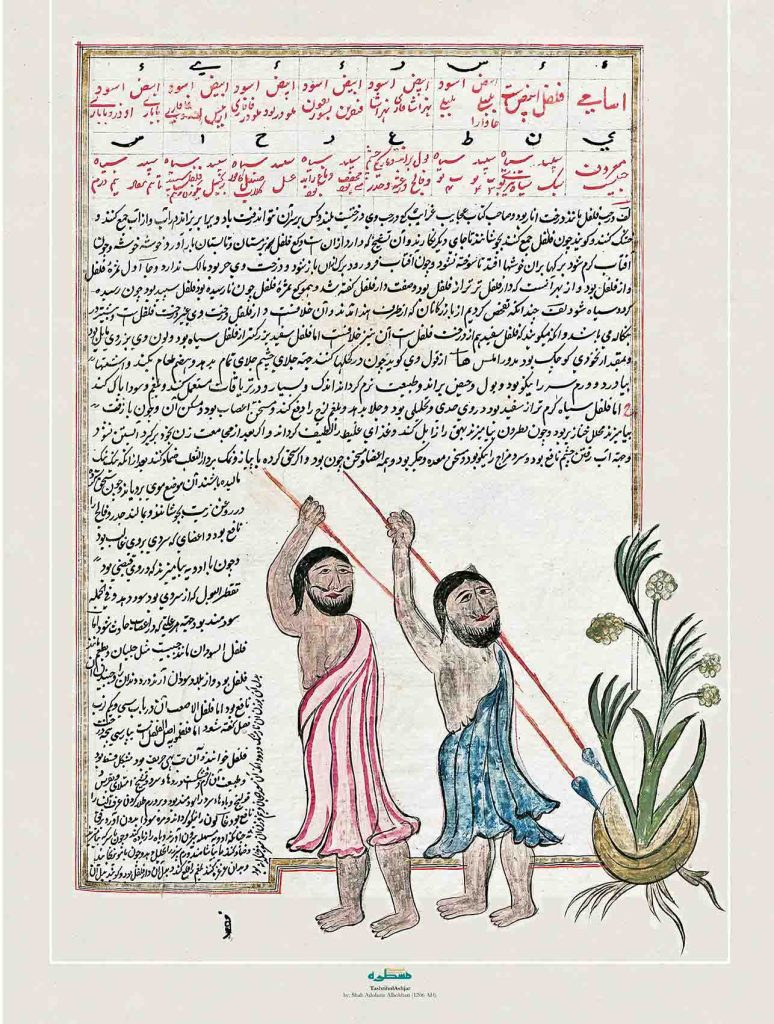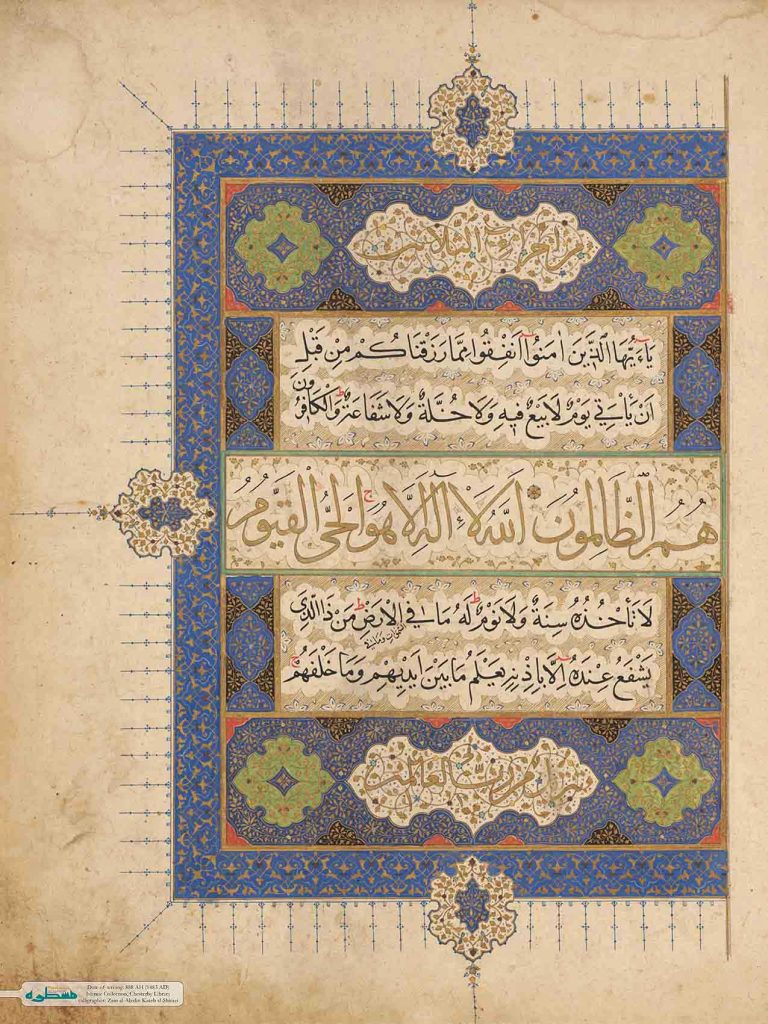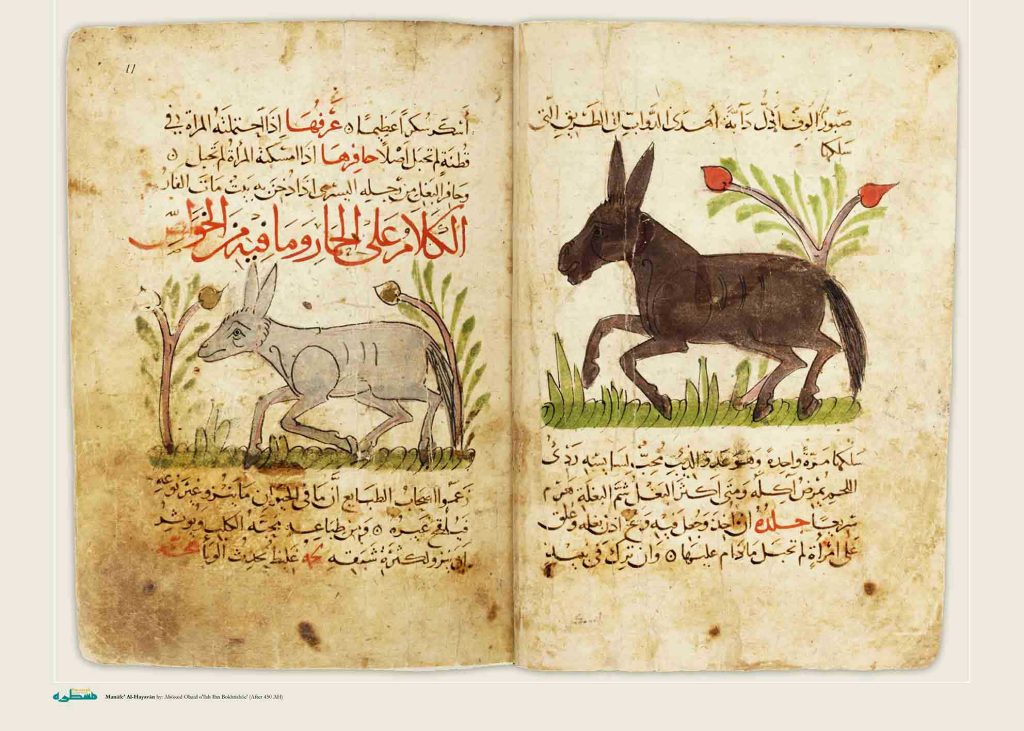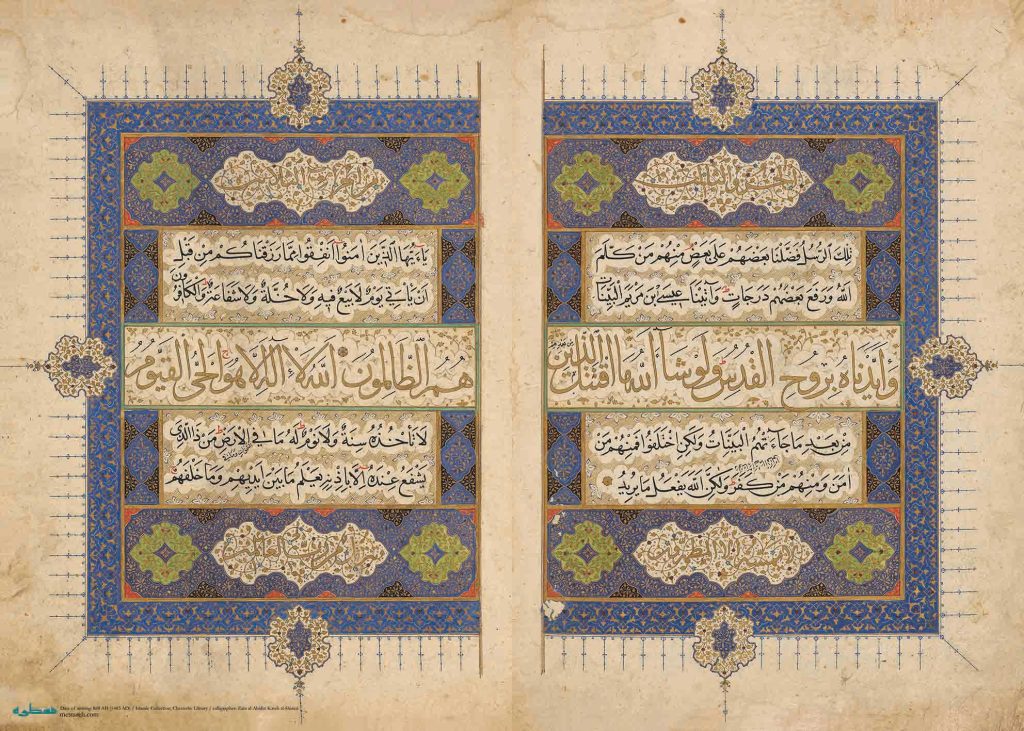The Third Part of the Quran by Kātib Shīrāzī
Name of the calligrapher
Font type
Date of writing
Version
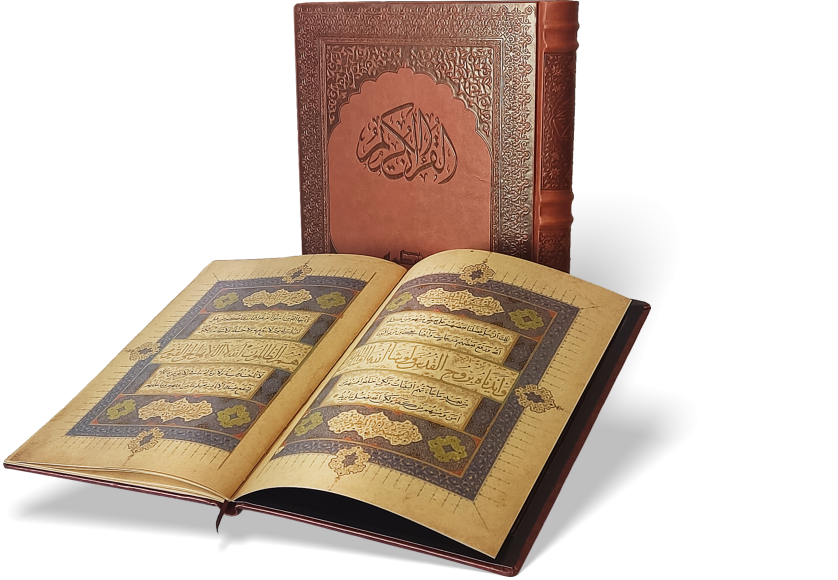
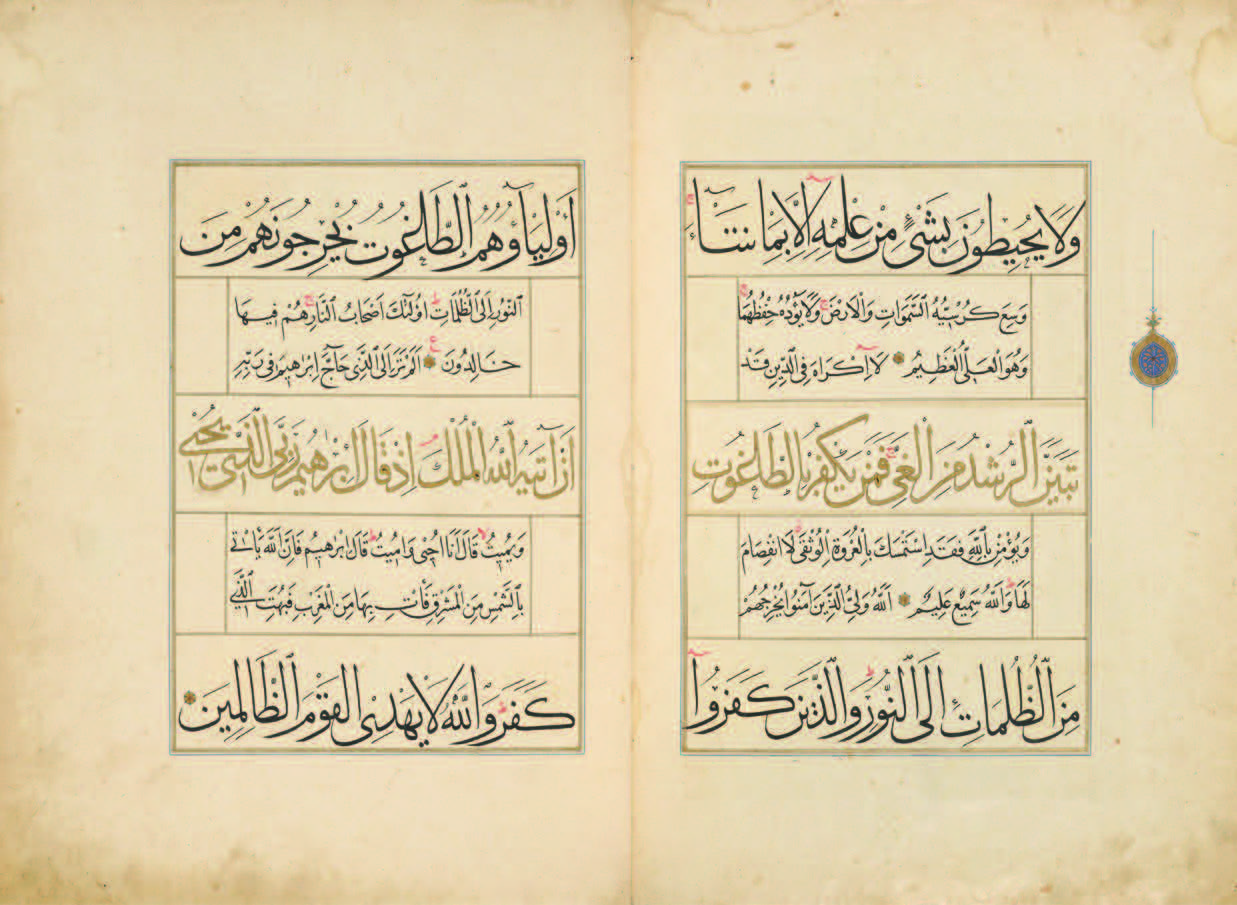
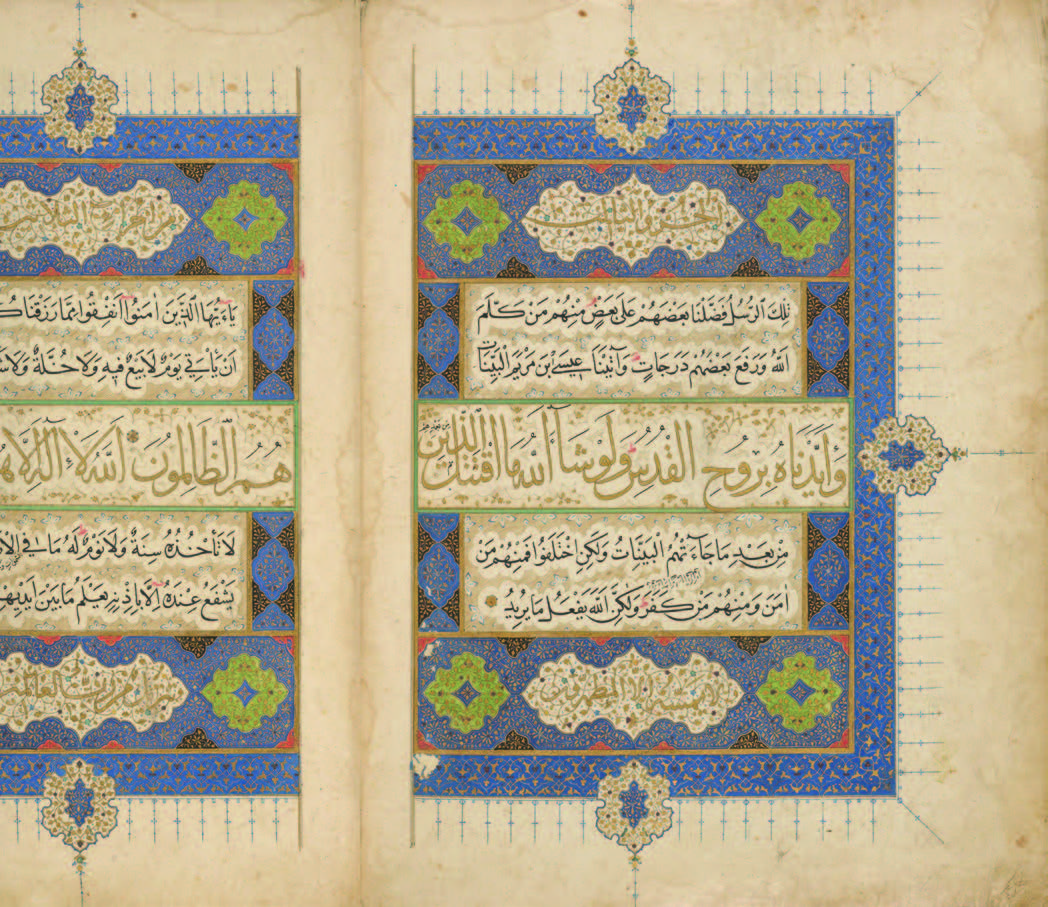
The third part of the Qur’an, crafted by Zayn al-‘Abidin ibn Muhammad Kātib Shīrāzī, dates back to 888 AH (1483 AD) and is housed in the Chester Beatty Library under reference number Is.1502. This manuscript is celebrated as one of the finest examples of calligraphy from Shiraz, particularly during the Aq Qoyunlu dynasty. Zayn al-‘Abidin, who completed a full Qur’an in 876 AH, created this particular section for Yaqūb Beg ibn Uzun Hasan, the son of Uzun Hasan, during the same era.
In his work, Zayn al-‘Abidin employed three distinct scripts: Muḥaqqaq, Naskh, and Thuluth. The top and bottom lines of each page are elegantly rendered in black ink using the Muḥaqqaq script, while the central line is adorned with golden ink in the Thuluth style.
The manuscript comprises 24 pages, measuring 393 by 307 by 23 millimeters. Its opening pages are embellished with exquisite illumination and rich azure tones. The first page features the title “الجزء الثالث” (The Third Part), with the phrase “من اجزاء ثلاثین” (From the Thirty Parts) elegantly inscribed on the facing page in gold. Additionally, the lower inscription on the first page includes the verse “لا يَمَسَّه الا المُطَّهرون” (Verse 79 of Surah Al-Waqi’a), while the opposite page displays the verse “تنزیلٌ مِن ربَّ العالمین” (Verse 80 of Surah Al-Waqi’a) in gold as well. The final page of this manuscript contains a complete confirmation of the Qur’an, along with the date and details of the scribe, further enhancing its artistic significance with the use of six different calligraphic scripts.
اشتراک گذاری :
Form is loading
Please Wait
Easy Form Builder

